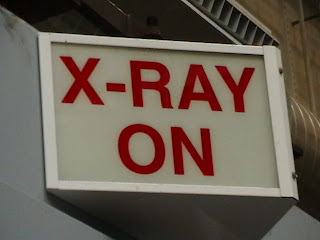Today (July 6th) was a very special, very cool day for me. We went to The Mariner's Museum, an amazing museum to begin with, but what we were able to see and do was absolutely incredible!!! The U.S.S. Monitor was the Union's first ironclad ship, and went up against the C.S.S. Virginia, formerly the Merrimac (there is some discrepancy over the correct spelling of Merrimac(k), but I will spell it without a 'k', as it was often written in the 1800's). Their fight, the Battle of Hampton Roads, wasn't a significant victory in the war - in fact, both sides claimed victory, and it was more or less a draw - but it was significant in terms of the world today. This was the first appearance of ironclad ships, and now that we had these, the age of wooden ships was over for good. Even the worst and most pathetic metal boat of the time could take on a wooden ship, and so ironclad ships became the newest technology. The Merrimac was eventually destroyed, and the Monitor sank a little over a year after their skirmish. But, in 2006, the turret of the Monitor was brought up from the ocean floor, and moved to the Mariner's Museum for preservation and archeology work. It's a pretty cool thing to begin with, and you can normally look into the conservation room from a balcony, and you can see the turret submerged in its water/chemical bath through a window from above. However, on the tour we had, we were able to take pictures of the turret, while it was out of the water! They drained the tank! We were taken through the conservation labs, we got to see all of the work set out and heard about the projects, and then they opened the door of the (temporarily empty) tank so that we could see the turret from the ground. It. Was. Incredible!
In addition to being able to see the turret out of the water, we were also given another very special opportunity. The museum usually restricts flash photography, and there are some areas where picture taking is not allowed. However, they allowed us to not only take pictures of everything and anything that we wanted, but they also let us use flashes so that we could get better pictures of the things we were interested in! It was such a wonderful experience, and I'm so glad that I had the opportunity to see and experience everything I was allowed to today.
 |
| Condiment Jars - the food was really good some nights, but other nights it was really bad... |
 |
| A cup and a camera that went down on a diving exploration of the Monitor. The cup is compressed from the pressure. |
 |
| A clock, with the hour hand pointing to around one o'clock, confirming accounts that the ship went down around 1 AM. |
 |
| Quotes regarding the U.S.S. Monitor |
 |
| A wash station in the captain's quarters |
 |
| A very nice bunk for a high ranking officer |
 |
| An officer writing home to his wife |
 |
| One of the original cannons from the ship. We learned about how iron was formed in production based on how it looks now. This cannon was poured into a mold, because it is still smooth. |
 |
| The anchor from the ship. Unlike the cannon, this anchor was pounded out by a blacksmith's hammer, leading to the formation of lines in the rust patterns. |
 |
| The turret, from above |
 |
| A cannon, in preservation fluid |
 |
| A part of the boat, preserved in liquid and with electrolydic reduction (that's what all the wires and pipes are for). The electrolydic reduction can reverse some rust, and restores the piece some. |
 |
| A new invention! It is as of yet unnamed, but was/ is being invented by the conservation staff to safely move artifacts from hot, humid climates to air conditioned ones. The biggest preservation room is not air conditioned because of the volume of liquids they deal with, but once artifacts are freeze dried they need to be stored in a case with AC. |
 |
| More of the ship being preserved, this is a cool pipe. |
 |
| X-Rays taken of parts of the ship's interior workings |
 |
| Before (bottom) and after (top) pictures of the engine's preservation and restoration - really impressive!!! |
 |
| A great example of electrolydic reduction and the use of electricity in preservation. |
 |
| Looking up at the turret of the Monitor, taken from ground level just inside of the tank. |
 |
| Another pipe in preservation fluid. |
 |
| The side of the turret, inside of the tank, at ground level. |





















No comments:
Post a Comment